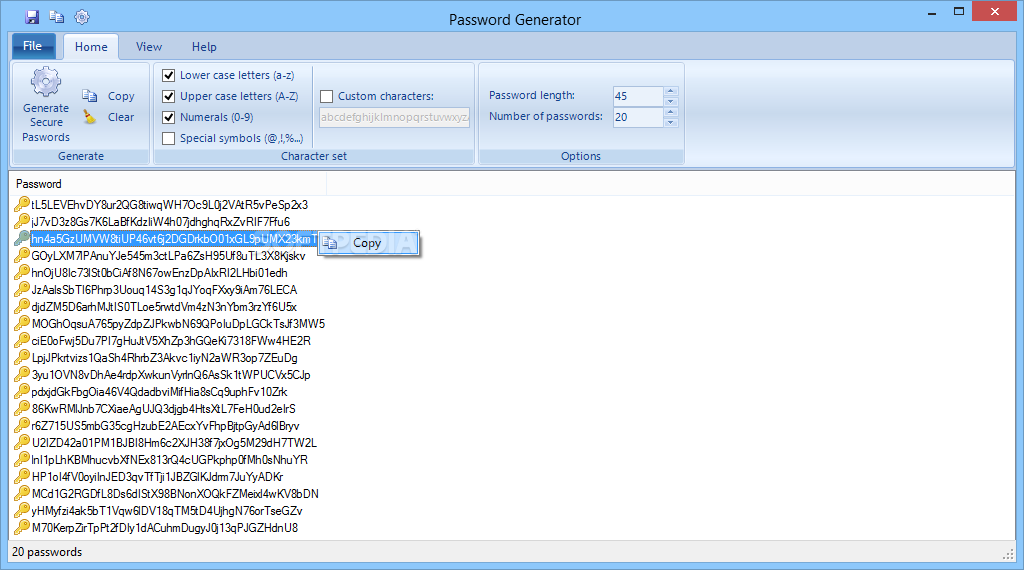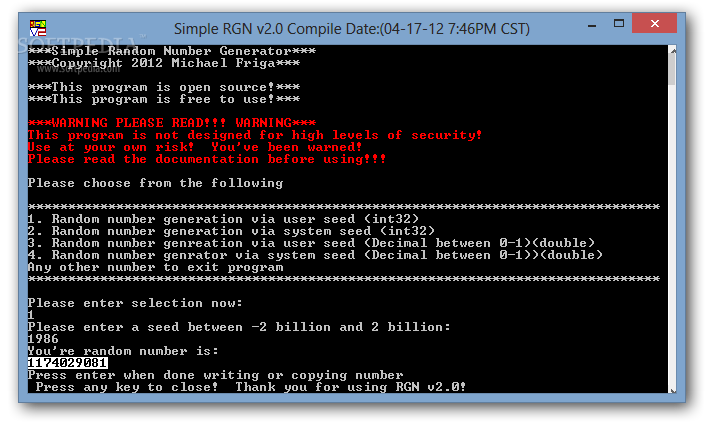
Start and end should be strings specifying times formated in theĭt_start = (start_time_string, format_string)ĭt_end = (end_time_string, format_string) Get a time at a proportion of a range of two formatted times. import randomĭef random_date(start_time_string, end_time_string, format_string, random_number): I modified it to get date with milliseconds. > random_date(pd.datetime.now(), pd.datetime.now() + pd.offsets.Hour(3)) Passing pandas/datetime objects directly. I like it, because of the nice pd.Timestamp features that allow me to throw different stuff and formats at it. Start, end = pd.Timestamp(start), pd.Timestamp(end) To chip in a pandas-based solution I use: import pandas as pdĭef random_date(start, end, position=None): Stop = datetime.datetime(year=2013, month=5, day=24) Start = datetime.datetime(year=2000, month=5, day=24), # Generate random datetime from datetime.datetime values

# Generate random datetime (parsing dates from str values)
#RANDOM DATA GENERATOR PYTHON INSTALL#
It's very simple using radar Installation pip install radar Start_date = datetime.date(year=2015, month=1, day=1)įake.date_between(start_date=start_date, end_date='+30y')

# Or if you need a more specific date boundaries, provide the start Installation pip install fakerįake.date_between(start_date='today', end_date='+30y')įake.date_time_between(start_date='-30y', end_date='now') Return str_time_prop(start, end, '%m/%d/%Y %I:%M %p', prop)

Return time.strftime(time_format, time.localtime(ptime)) Stime = time.mktime(time.strptime(start, time_format))Įtime = time.mktime(time.strptime(end, time_format)) The returned time will be in the specified format. Prop specifies how a proportion of the interval to be taken after Given format (strftime-style), giving an interval. Start and end should be strings specifying times formatted in the """Get a time at a proportion of a range of two formatted times. Python example (output is almost in the format you specified, other than 0 padding - blame the American time format conventions): import randomĭef str_time_prop(start, end, time_format, prop): Convert the timestamp back to date string and you have a random time in that range. milliseconds, seconds, hours, days, whatever), subtract the earlier from the later, multiply your random number (assuming it is distributed in the range ) with that difference, and add again to the earlier one. issuer_digits - the issuer of a credit card and the number of digits to generate, separated by an underscore.Convert both strings to timestamps (in your chosen resolution, e.g.issuer - the issuer of a credit card, or.Generates a credit card of a given length that is valid for a specific issuer with a checksum using the Luhn formula. Return value: Card number with Luhn checkdigit The Luhn algorithm or Luhn formula, also known as the "modulus 10" or "mod 10" algorithm, is a simple checksum formula used to validate a variety of identification numbers, such as credit card numbers, IMEI numbers, National Provider Identifier numbers in US, and Canadian Social Insurance Numbers. Return value: the next or previous Elf-Proef numberĪdds a Luhn checkdigit. sign - The arithmetic operator, either "+" to get the next number, or "-" to get the previous number in the sequence.Tests if the number fulfills the Elf-Proef formula, or finds the next or previous Elf-Proef number, according to the Dutch bank account number validation method. Returns a random number including Luhn check digit. Generates a valid credit card number with a Luhn check digit. Variables: After you have declared a parameter x in your Test, you can reference its value elsewhere using $ (A|P)M")Ī number between 12 and 01, padded with one zero followed by a colon and a number between 00-59, twice, followed by a space, followed by AM or PMįinds the next Elf-Proef number (Dutch bank account number validation method). For example, the random credit card function accepts "AMEX" as argument, and returns a valid random American Express number. An expression can be numbers, text, functions, functions, or a combination of these.įunctions: A Data Generation Function accepts zero or more arguments, and returns a value. The parameter values for Test Data Generator functions are ECMAScript 6 expressions.

When you parameterize your tests, you can assign these functions as variable values instead of using static hard-coded values. The following functions are available to generate synthetic test data.


 0 kommentar(er)
0 kommentar(er)
